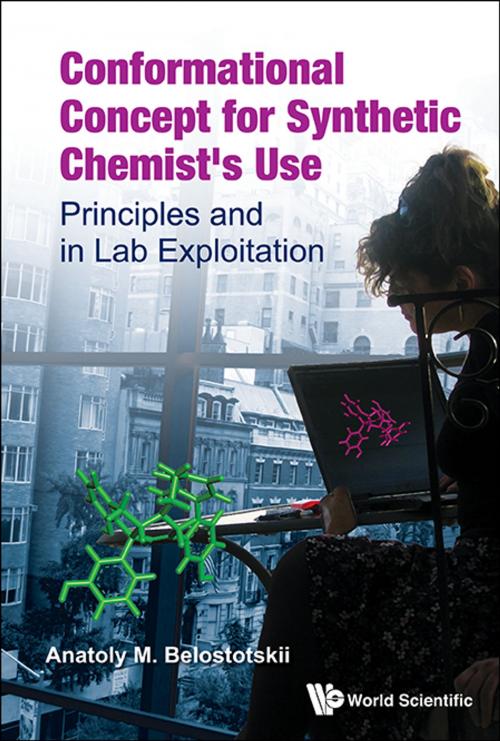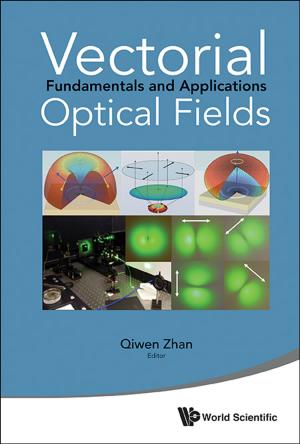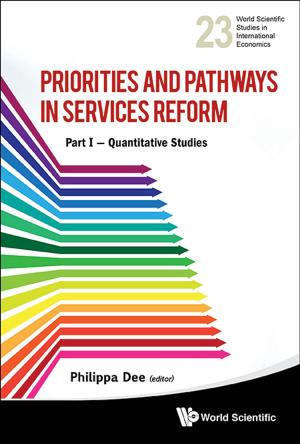Conformational Concept for Synthetic Chemist's Use
Principles and in Lab Exploitation
Nonfiction, Science & Nature, Science, Chemistry, Organic| Author: | Anatoly M Belostotskii | ISBN: | 9789814730235 |
| Publisher: | World Scientific Publishing Company | Publication: | September 17, 2015 |
| Imprint: | WSPC | Language: | English |
| Author: | Anatoly M Belostotskii |
| ISBN: | 9789814730235 |
| Publisher: | World Scientific Publishing Company |
| Publication: | September 17, 2015 |
| Imprint: | WSPC |
| Language: | English |
This innovative book presents an original account of the principles of conformational theory. It has a strong focus on computational methodologies for conformational space exploration. By revisiting basic conformational conventions, considering experimental results which are often misinterpreted by organic chemists, and qualitatively analyzing the potential energy surface, the book helps non-experts to understand molecular flexibility at the level required in contemporary research.
The book shows synthetic organic chemists how to perform successful conformational studies using widespread calculation packages ('click computational chemistry') instead of being misguided by textbook-based conformational analysis. The monograph actually offers to synthetic chemists a new research tool that can significantly upgrade their ability to predict, or at least explain, regioselectivity and stereoselectivity in their own reactions.
Contents:
- Geometries of Organic Molecules: Is There a Place for a Simple Look?
- Conformer and Conformation
- Quantitative Description of Conformational Space
- A "Fast" Computational Method: Molecular Mechanics
- A "Universal" Computational Method: Quantum Mechanics
- Calculated Chemical Shifts in Conformational Analysis
Readership: Organic, bioorganic, and medicinal chemists, specialists in structure determination of natural products, drug and material designers; advanced graduate students.
Key Features:
- Provides a guide to solve conformational problems of unexplored compounds, thus aiding organic as well as bio-organic and medicinal chemists who are inexperienced with calculations
- Provides a complementary background in modern stereochemistry
This innovative book presents an original account of the principles of conformational theory. It has a strong focus on computational methodologies for conformational space exploration. By revisiting basic conformational conventions, considering experimental results which are often misinterpreted by organic chemists, and qualitatively analyzing the potential energy surface, the book helps non-experts to understand molecular flexibility at the level required in contemporary research.
The book shows synthetic organic chemists how to perform successful conformational studies using widespread calculation packages ('click computational chemistry') instead of being misguided by textbook-based conformational analysis. The monograph actually offers to synthetic chemists a new research tool that can significantly upgrade their ability to predict, or at least explain, regioselectivity and stereoselectivity in their own reactions.
Contents:
- Geometries of Organic Molecules: Is There a Place for a Simple Look?
- Conformer and Conformation
- Quantitative Description of Conformational Space
- A "Fast" Computational Method: Molecular Mechanics
- A "Universal" Computational Method: Quantum Mechanics
- Calculated Chemical Shifts in Conformational Analysis
Readership: Organic, bioorganic, and medicinal chemists, specialists in structure determination of natural products, drug and material designers; advanced graduate students.
Key Features:
- Provides a guide to solve conformational problems of unexplored compounds, thus aiding organic as well as bio-organic and medicinal chemists who are inexperienced with calculations
- Provides a complementary background in modern stereochemistry















